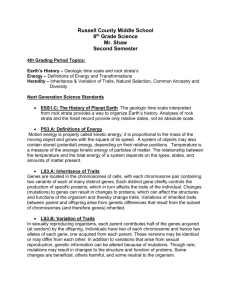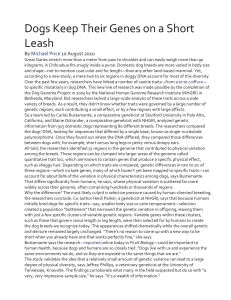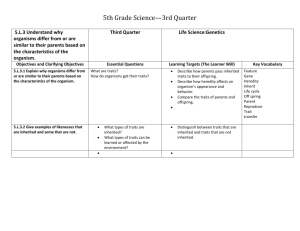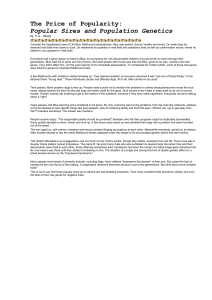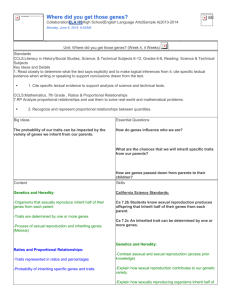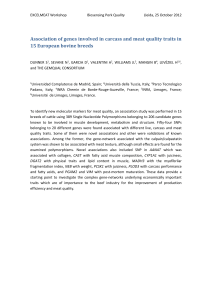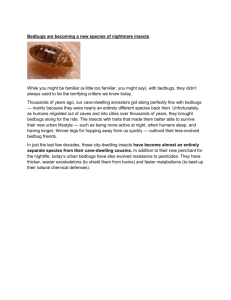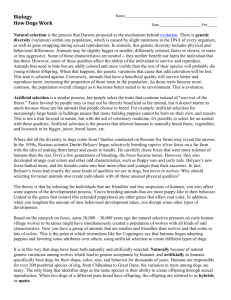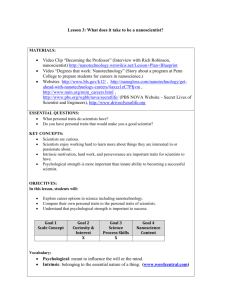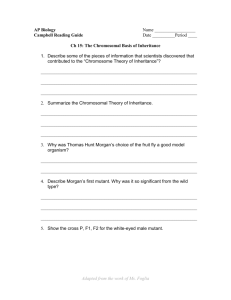How Scientists Decide What to Study
advertisement
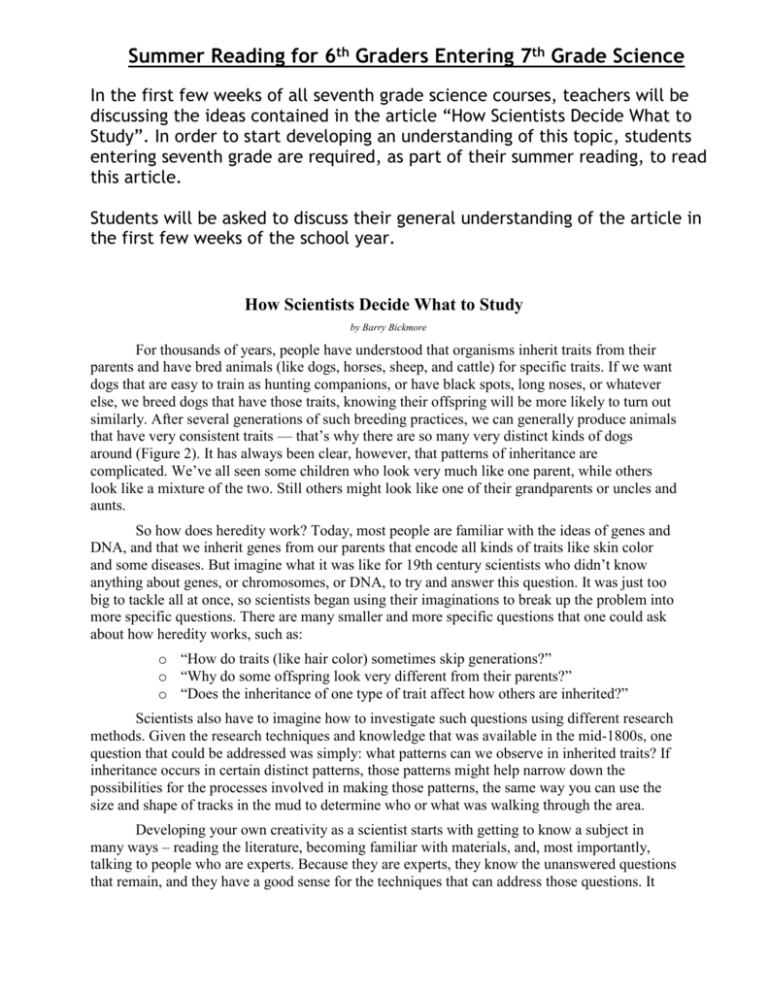
Summer Reading for 6th Graders Entering 7th Grade Science In the first few weeks of all seventh grade science courses, teachers will be discussing the ideas contained in the article “How Scientists Decide What to Study”. In order to start developing an understanding of this topic, students entering seventh grade are required, as part of their summer reading, to read this article. Students will be asked to discuss their general understanding of the article in the first few weeks of the school year. How Scientists Decide What to Study by Barry Bickmore For thousands of years, people have understood that organisms inherit traits from their parents and have bred animals (like dogs, horses, sheep, and cattle) for specific traits. If we want dogs that are easy to train as hunting companions, or have black spots, long noses, or whatever else, we breed dogs that have those traits, knowing their offspring will be more likely to turn out similarly. After several generations of such breeding practices, we can generally produce animals that have very consistent traits — that’s why there are so many very distinct kinds of dogs around (Figure 2). It has always been clear, however, that patterns of inheritance are complicated. We’ve all seen some children who look very much like one parent, while others look like a mixture of the two. Still others might look like one of their grandparents or uncles and aunts. So how does heredity work? Today, most people are familiar with the ideas of genes and DNA, and that we inherit genes from our parents that encode all kinds of traits like skin color and some diseases. But imagine what it was like for 19th century scientists who didn’t know anything about genes, or chromosomes, or DNA, to try and answer this question. It was just too big to tackle all at once, so scientists began using their imaginations to break up the problem into more specific questions. There are many smaller and more specific questions that one could ask about how heredity works, such as: o “How do traits (like hair color) sometimes skip generations?” o “Why do some offspring look very different from their parents?” o “Does the inheritance of one type of trait affect how others are inherited?” Scientists also have to imagine how to investigate such questions using different research methods. Given the research techniques and knowledge that was available in the mid-1800s, one question that could be addressed was simply: what patterns can we observe in inherited traits? If inheritance occurs in certain distinct patterns, those patterns might help narrow down the possibilities for the processes involved in making those patterns, the same way you can use the size and shape of tracks in the mud to determine who or what was walking through the area. Developing your own creativity as a scientist starts with getting to know a subject in many ways – reading the literature, becoming familiar with materials, and, most importantly, talking to people who are experts. Because they are experts, they know the unanswered questions that remain, and they have a good sense for the techniques that can address those questions. It might seem like a paradox that you have to be knowledgeable in order to be creative, but new knowledge can only be generated if you know what has come before. Fostering scientific creativity also involves challenging that knowledge, by asking “what if” questions, proposing alternative solutions, and looking across disciplinary boundaries to answer your questions. What if cancer were caused by something you ate? How would we test for that? What other concepts might be important to answering that question? This “art” involves choosing which “what if” questions can really be addressed, and creatively figuring out ways to answer them. Reading Standards for Literacy in Science and Technical Subjects 6–12 2. Determine the central ideas or conclusions of a text; provide an accurate summary of the text distinct from prior knowledge or opinions. 6. Analyze the author’s purpose in providing an explanation, describing a procedure, or discussing an experiment in a text. 10. By the end of grade 8, read and comprehend science/technical texts in the grades 6-8 text complexity band independently and proficiently


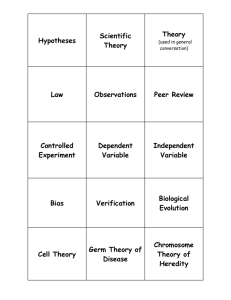

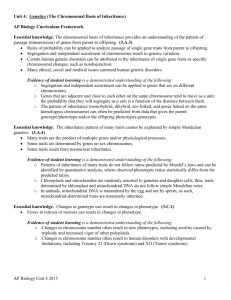

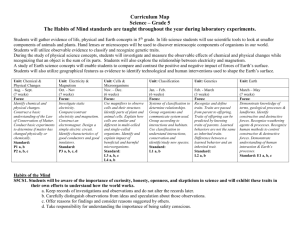

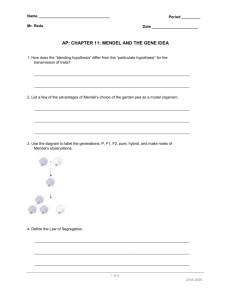


![[Content_Types].](http://s3.studylib.net/store/data/006876058_1-8d1c5d27aa7853e1d8ce3ce45ec33ccc-300x300.png)
